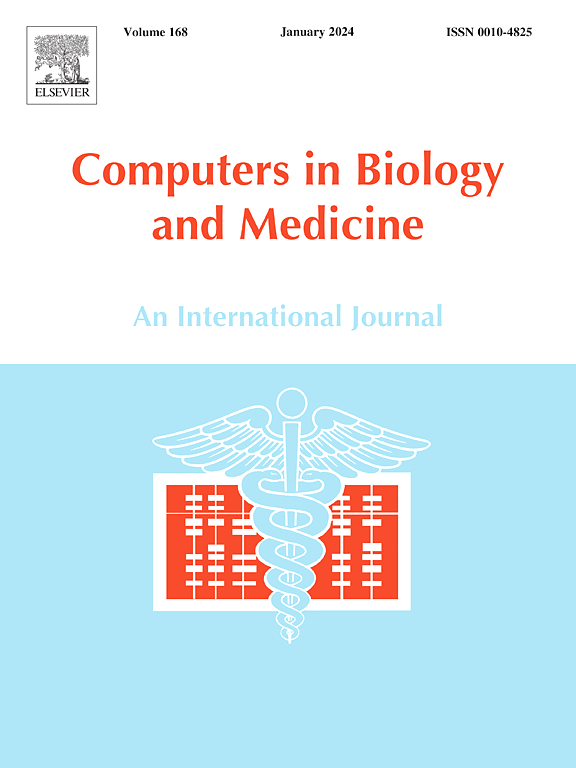Targeting the dengue virus NS5-Methyltransferase SAM binding site with limonoids: Molecular docking, dynamics simulation, DFT and ADMET analysis
IF 6.3
2区 医学
Q1 BIOLOGY
引用次数: 0
Abstract
Dengue virus (DENV) infects over 100 million people annually, yet no approved antiviral therapies are available. The DENV genome is a positive-sense single-stranded RNA (+) ssRNA) encoding ten proteins: three structural (capsid, membrane, and envelope) and seven non-structural (NS1–NS5). Among these, the NS5 methyltransferase (NS5-MTase) is essential for viral replication and is a promising drug target due to the absence of approved inhibitors. NS5-MTase has two binding sites: one for S-adenosyl-L-methionine (SAM) and another for RNA. The RNA-binding site is shallow and solvent-exposed, making the SAM-binding site a more suitable target for small-molecule inhibitors. Phytocompounds, particularly limonoids—a class of tetraterpenoids with known pharmacological activities are promising candidates in antiviral drug discovery. In this study, 500 limonoids were screened through molecular docking against the SAM-binding site of DENV NS5-MTase. This is the first large-scale in silico virtual screening of limonoids targeting this site. Three top compounds were identified: 7-deacetyl-21-hydroxyneotrichilenonelide (DHC), demethyl-3-detigloyl-iso-swietenine (DDIS), and demethyl-iso-swietenolide (DIS). The docking scores of the three compounds were −9.4, −9.5, and −9.9 kcal/mol, respectively. These three compounds were further evaluated using molecular dynamics (MD) simulations to assess the stability and interaction profiles of the protein-ligand complexes. DIS exhibited the most stable binding conformation (forming 3-4 H-bond/ns and maintaining a RMSD below 0.15 nm) and a more favorable interaction profile compared to the other compounds during MD simulations. Additionally, binding free energy (MM-PBSA), in silico ADMET analysis, and DFT calculations, also indicate that DIS is the most promising candidate against DENV.

用类柠檬素靶向登革病毒ns5 -甲基转移酶SAM结合位点:分子对接、动力学模拟、DFT和ADMET分析
登革热病毒(DENV)每年感染1亿多人,但目前还没有获得批准的抗病毒疗法。DENV基因组是一个正义单链RNA (+) ssRNA)编码10个蛋白:3个结构蛋白(衣壳、膜和包膜)和7个非结构蛋白(NS1-NS5)。其中,NS5甲基转移酶(NS5- mtase)对病毒复制至关重要,由于缺乏批准的抑制剂,它是一个有希望的药物靶点。NS5-MTase有两个结合位点:一个与s -腺苷- l-蛋氨酸(SAM)结合,另一个与RNA结合。rna结合位点较浅且暴露于溶剂中,这使得sam结合位点更适合小分子抑制剂的靶点。植物化合物,特别是具有已知药理活性的一类四萜类化合物,是发现抗病毒药物的有希望的候选者。本研究通过对DENV NS5-MTase sam结合位点的分子对接,筛选出500个柠檬素类化合物。这是针对该位点的第一次大规模的柠檬酮的计算机虚拟筛选。鉴定出3个顶级化合物:7-去乙酰基-21-羟基新三烯烯内酯(DHC)、去甲基-3-去甲基-异甜苷(DDIS)和去甲基-异甜苷内酯(DIS)。3种化合物的对接分数分别为- 9.4、- 9.5和- 9.9 kcal/mol。这三种化合物进一步利用分子动力学(MD)模拟来评估蛋白质-配体复合物的稳定性和相互作用谱。在MD模拟中,与其他化合物相比,DIS表现出最稳定的结合构象(形成3-4个氢键/ns, RMSD低于0.15 nm)和更有利的相互作用谱。此外,结合自由能(MM-PBSA)、硅ADMET分析和DFT计算也表明DIS是最有希望对抗DENV的候选者。
本文章由计算机程序翻译,如有差异,请以英文原文为准。
求助全文
约1分钟内获得全文
求助全文
来源期刊

Computers in biology and medicine
工程技术-工程:生物医学
CiteScore
11.70
自引率
10.40%
发文量
1086
审稿时长
74 days
期刊介绍:
Computers in Biology and Medicine is an international forum for sharing groundbreaking advancements in the use of computers in bioscience and medicine. This journal serves as a medium for communicating essential research, instruction, ideas, and information regarding the rapidly evolving field of computer applications in these domains. By encouraging the exchange of knowledge, we aim to facilitate progress and innovation in the utilization of computers in biology and medicine.
 求助内容:
求助内容: 应助结果提醒方式:
应助结果提醒方式:


